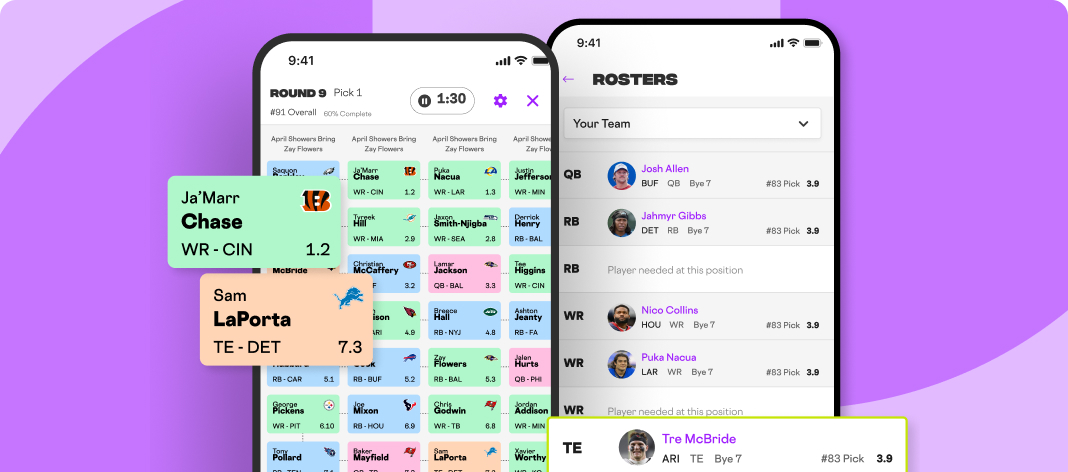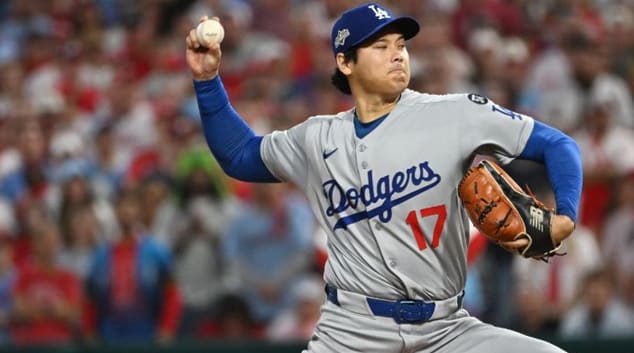If you look at the rate stats for hitters and pitchers from various projections, they're usually pretty close. The difference from set to set is almost always playing time. So, if you want to do your own projections, take the average of a few trusted sources, then prorate the numbers to your own playing time projection.
Seriously, this works. If you want the satisfaction of using your own numbers, using your own playing time estimations gets the job done.
However, since I'm only about 150 words into a column usually ten times that count, there must be more to it. What follows are some guidelines when setting playing time for hitters and pitchers.
HITTING
A hitter's spot in the order and his team context matter. Using 2017 data, here's the average plate appearances per lineup spot along with the number from the highest (Astros) and lowest (Padres) scoring teams in the league:
| Split | Average | Astros | Padres |
| Batting 1st | 756 | 762 | 723 |
| Batting 2nd | 738 | 750 | 711 |
| Batting 3rd | 721 | 725 | 698 |
| Batting 4th | 705 | 714 | 680 |
| Batting 5th | 687 | 703 | 666 |
| Batting 6th | 670 |
If you look at the rate stats for hitters and pitchers from various projections, they're usually pretty close. The difference from set to set is almost always playing time. So, if you want to do your own projections, take the average of a few trusted sources, then prorate the numbers to your own playing time projection.
Seriously, this works. If you want the satisfaction of using your own numbers, using your own playing time estimations gets the job done.
However, since I'm only about 150 words into a column usually ten times that count, there must be more to it. What follows are some guidelines when setting playing time for hitters and pitchers.
HITTING
A hitter's spot in the order and his team context matter. Using 2017 data, here's the average plate appearances per lineup spot along with the number from the highest (Astros) and lowest (Padres) scoring teams in the league:
| Split | Average | Astros | Padres |
| Batting 1st | 756 | 762 | 723 |
| Batting 2nd | 738 | 750 | 711 |
| Batting 3rd | 721 | 725 | 698 |
| Batting 4th | 705 | 714 | 680 |
| Batting 5th | 687 | 703 | 666 |
| Batting 6th | 670 | 682 | 646 |
| Batting 7th | 653 | 665 | 630 |
| Batting 8th | 633 | 645 | 612 |
| Batting 9th | 614 | 625 | 588 |
Having a general idea of the upper and lower limits as well as the average helps when dealing with teams like the Tigers and Marlins, both likely to score fewer runs than last season, along with teams featuring an improved lineup like the Angels.
More important are trends displayed by hitters who recorded different levels of plate appearances the previous season. I've taken data from the past six seasons, generating five tiers. Each season is broken into different tiers of plate appearances, with the study looking at the percent change in PAs the next season. We'll go through each tier individually.
To help keep things in perspective, here's the number of runs scored each season of the study:
| Season | Runs |
| 2017 | 22582 |
| 2016 | 21744 |
| 2015 | 20647 |
| 2014 | 19761 |
| 2013 | 20255 |
| 2012 | 21017 |
More than 650 plate appearances
| Years | batters | >10% fewer | 5-10% fewer | 0-5% fewer | 0-5% more | 5-10% more | >10% more |
| 2016-17 | 47 | 20 | 7 | 14 | 4 | 2 | 0 |
| 2015-16 | 43 | 11 | 4 | 15 | 10 | 2 | 1 |
| 2014-15 | 36 | 17 | 3 | 10 | 6 | 0 | 0 |
| 2013-14 | 46 | 24 | 6 | 9 | 5 | 2 | 0 |
| 2012-13 | 41 | 22 | 3 | 9 | 5 | 2 | 0 |
Unsurprisingly, the number of batters in this group increases as the scoring increases one season to the next. This helps frame how many hitters to project in this range for 2018. Do you feel the homer barrage will continue, with runs going along for the ride? If so, maybe project 50 players to amass at least 650 trips to the dish.
The real message is most hitters in this range experience fewer plate appearances the following season. This is crucial since we're looking at the fantasy studs in this group. We already tend to progress rate stats aggressively. This can be compounded with overly optimistic playing time projections. Just look at last season. Only six of the hitters registering at least 651 plate appearances in 2016 increased their total last season.
This doesn't mean you should just drop everyone's playing time projection from the previous season, of course. However, the number of hitters getting fewer chances to swing the bat could be greater then you'd think, so it's necessary to be realistic with expectations.
Since you're probably wondering, younger players and those without an injury history are more likely to land on the right side of the chart.
Between 601 and 650 plate appearances
| Years | batters | >10% fewer | 5-10% fewer | 0-5% fewer | 0-5% more | 5-10% more | >10% more |
| 2016-17 | 40 | 20 | 4 | 3 | 6 | 5 | 2 |
| 2015-16 | 37 | 17 | 4 | 4 | 8 | 3 | 1 |
| 2014-15 | 37 | 16 | 3 | 4 | 8 | 5 | 1 |
| 2013-14 | 25 | 12 | 1 | 3 | 3 | 1 | 5 |
| 2012-13 | 39 | 15 | 3 | 7 | 6 | 4 | 4 |
There's a few more players in this range seeing increased playing time, but the big-picture approach should still be conservative. In case you're wondering, injuries do account for some of the batters falling short of the previous season's plate appearances, but the overall lesson is still to be practical with playing time estimations.
Between 501 and 600 plate appearances
| Years | batters | >10% fewer | 5-10% fewer | 0-5% fewer | 0-5% more | 5-10% more | >10% more |
| 2016-17 | 55 | 24 | 4 | 8 | 5 | 7 | 7 |
| 2015-16 | 60 | 31 | 1 | 5 | 6 | 4 | 13 |
| 2014-15 | 70 | 33 | 5 | 7 | 5 | 4 | 16 |
| 2013-14 | 69 | 33 | 5 | 6 | 6 | 6 | 13 |
| 2012-13 | 67 | 34 | 5 | 4 | 7 | 4 | 13 |
This range was expanded since the 501-550 and 551-600 levels were nearly identical. The note here is while the largest column is losing 10 percent of plate appearances, batters jumping by that amount are creeping up. We're dealing with 50 to 60 more opportunities in those cases, which is huge. These could be players coming off an injury or perhaps those who spent some time in the minors.
Between 401 and 500 plate appearances
| Years | batters | >10% fewer | 5-10% fewer | 0-5% fewer | 0-5% more | 5-10% more | >10% more |
| 2016-17 | 54 | 24 | 2 | 3 | 5 | 3 | 17 |
| 2015-16 | 64 | 25 | 2 | 2 | 4 | 4 | 27 |
| 2014-15 | 61 | 31 | 2 | 6 | 3 | 1 | 18 |
| 2013-14 | 57 | 29 | 3 | 2 | 3 | 1 | 19 |
| 2012-13 | 46 | 24 | 1 | 1 | 4 | 3 | 13 |
Keep in mind as plate appearances decline, the corresponding percentages do too. Here, 10 percent represents losing or gaining 40 to 50 plate appearances. Even so, the general trend is the same; more hitters drop over 10 percent, but the gap between those with a 10 percent bump is narrowing. In fact, in 2016, more increased by 10 percent than declined.
Between 301 and 400 plate appearances
| Years | batters | >10% fewer | 5-10% fewer | 0-5% fewer | 0-5% more | 5-10% more | >10% more |
| 2016-17 | 53 | 22 | 2 | 1 | 2 | 2 | 24 |
| 2015-16 | 54 | 24 | 4 | 2 | 2 | 1 | 21 |
| 2014-15 | 48 | 22 | 0 | 4 | 0 | 0 | 22 |
| 2013-14 | 67 | 32 | 3 | 2 | 1 | 3 | 26 |
| 2012-13 | 71 | 37 | 2 | 3 | 1 | 2 | 26 |
There's a definite pattern emerging which will be more apparent when the data is presented for the sum of all five tiers. The two extremes – fewer and more than 10 percent difference – still predominate, with the more faction gaining steam.
Between 201 and 300 plate appearances
| Years | batters | >10% fewer | 5-10% fewer | 0-5% fewer | 0-5% more | 5-10% more | >10% more |
| 2016-17 | 62 | 28 | 1 | 1 | 0 | 1 | 31 |
| 2015-16 | 65 | 24 | 1 | 4 | 4 | 1 | 31 |
| 2014-15 | 71 | 32 | 2 | 3 | 1 | 0 | 33 |
| 2013-14 | 69 | 33 | 5 | 0 | 2 | 1 | 28 |
| 2012-13 | 82 | 43 | 1 | 2 | 1 | 5 | 30 |
This is the final range investigated. The batters securing more playing time has finally surpassed those losing it. Of course, in this grouping, we're only looking at a minimum of 20 to 30 plate appearances at the extremes in raw gain or loss. Still, regardless of the extent of the increase, it takes fewer than half a season's worth of plate appearances before the odds are in your favor to play more than the previous campaign.
As teased, here's the data combined in one table:
| PA | #players | >10% fewer | 5-10% fewer | 0-5% fewer | 0-5% more | 5-10% more | >10% more | overall fewer | overall more |
| 651-plus | 213 | 94 | 23 | 57 | 30 | 8 | 1 | 82% | 18% |
| 601-650 | 178 | 80 | 15 | 21 | 31 | 18 | 13 | 65% | 35% |
| 551-600 | 149 | 70 | 7 | 17 | 18 | 16 | 21 | 63% | 37% |
| 501-550 | 172 | 85 | 13 | 13 | 11 | 9 | 41 | 65% | 35% |
| 451-500 | 133 | 64 | 7 | 8 | 12 | 4 | 38 | 59% | 41% |
| 401-450 | 149 | 69 | 3 | 6 | 7 | 8 | 56 | 52% | 48% |
| 351-400 | 145 | 69 | 6 | 4 | 4 | 3 | 59 | 54% | 46% |
| 301-351 | 148 | 68 | 5 | 8 | 2 | 5 | 60 | 55% | 45% |
| 251-300 | 183 | 87 | 6 | 4 | 6 | 4 | 76 | 53% | 47% |
| 201-250 | 166 | 73 | 4 | 6 | 2 | 4 | 77 | 50% | 50% |
Looking at the last two columns, it's hopefully clear injuries aren't the only consideration. The more a hitter played the previous season, the less of a chance he had matching, let alone besting, his plate appearances the ensuing season. To be honest, for some, that single sentence would have sufficed, but I've learned over the years many appreciate seeing the work.
To that end, if you prefer to not see similar data for starting pitchers, scroll down to the pitching conclusion and final thoughts section.
STARTING PITCHING
A similar study was conducted with all starting pitchers who tossed at least 50 frames in the trailing season. A slight difference is the middle two columns, 0-5 percent more and 0-5 percent less, are combined into one, labeled "same". Especially as the innings decrease, this difference is just a start or two at most. As you'll see, it doesn't change the analysis.
More than 200 innings
| Years | pitchers | 10% more | 5-10% more | same | 5-10% fewer | 10% fewer |
| 2016-17 | 15 | 0 | 0 | 3 | 3 | 9 |
| 2015-16 | 27 | 0 | 1 | 7 | 4 | 15 |
| 2014-15 | 32 | 0 | 1 | 8 | 4 | 19 |
| 2013-14 | 32 | 1 | 1 | 11 | 5 | 14 |
| 2012-13 | 29 | 0 | 1 | 11 | 5 | 12 |
Right off the bat, it's alarming how few pitchers tossed more than 200 stanzas. Keep in mind the 2016-17 group measures how the pitchers who threw at least 200 innings in 2016 fared last season. In 2017, the same number of pitchers, 15, eclipsed the 200-inning plateau. If you buy into the notion teams will turn to their bullpens earlier, this number may drop even more. The message is the same as with hitters, though: temper innings expectations, as the majority of workhorses hurl fewer innings one season to the next.
Between 176 and 200 innings
| Years | pitchers | 10% more | 5-10% more | same | 5-10% fewer | 10% fewer |
| 2016-17 | 38 | 2 | 2 | 5 | 2 | 27 |
| 2015-16 | 29 | 0 | 0 | 7 | 2 | 20 |
| 2014-15 | 36 | 3 | 3 | 9 | 2 | 19 |
| 2013-14 | 29 | 6 | 5 | 4 | 0 | 14 |
| 2012-13 | 41 | 5 | 7 | 6 | 3 | 20 |
A few things stand out here. The number of pitchers in this tier is increasing, which makes sense since the tier above is dwindling. The number throwing more frames the next season is falling, though it had a mini-resurgence last season. Still, the overwhelming outcome is around 18 to 20 fewer innings one year to the next.
Between 151 and 175 innings
| Years | pitchers | 10% more | 5-10% more | same | 5-10% fewer | 10% fewer |
| 2016-17 | 24 | 3 | 1 | 3 | 4 | 13 |
| 2015-16 | 23 | 7 | 3 | 5 | 0 | 8 |
| 2014-15 | 26 | 9 | 1 | 2 | 1 | 13 |
| 2013-14 | 22 | 4 | 2 | 3 | 2 | 11 |
| 2012-13 | 23 | 9 | 0 | 4 | 0 | 10 |
Note the number of pitchers accruing 176 to 200 innings exceeds those in the 151 to 175 range. Especially with the recent trend of shortening starts, as well as the usual missed time due to injuries, I expected the totals to be closer, though as was pointed out, some 200-inning bell cows dropped into the lower tier.
In general, the song remains the same; expect a realistic number of innings, but don't overlook the chance a pitcher increases his workload. There many be more pitchers throwing fewer frames, but there are still some who see their innings rise.
Between 101 and 150 innings
| Years | pitchers | 10% more | 5-10% more | same | 5-10% fewer | 10% fewer |
| 2016-17 | 45 | 24 | 2 | 1 | 2 | 16 |
| 2015-16 | 40 | 16 | 0 | 2 | 1 | 21 |
| 2014-15 | 33 | 13 | 3 | 0 | 2 | 15 |
| 2013-14 | 41 | 23 | 0 | 0 | 1 | 17 |
| 2012-13 | 25 | 7 | 3 | 3 | 1 | 11 |
Please note the range has doubled. Also observe the number who added to their workload exceeded those who declined. Relative to hitters, the turning point occurs in a higher tier. As you likely intuit, the effect is a combination of pitchers ramping up after injury or working a full season after a mid-season callup the year before.
Between 51 and 100 innings
| Years | pitchers | 10% more | 5-10% more | same | 5-10% fewer | 10% fewer |
| 2016-17 | 34 | 14 | 0 | 3 | 0 | 17 |
| 2015-16 | 44 | 24 | 0 | 1 | 0 | 19 |
| 2014-15 | 36 | 13 | 1 | 2 | 1 | 19 |
| 2013-14 | 31 | 16 | 1 | 2 | 0 | 12 |
| 2012-13 | 40 | 24 | 0 | 2 | 0 | 14 |
These results are a little curious as they fluctuate year to year. On the other hand, the inventory in this tier likely isn't very interesting anyway.
So, just like with hitters, the prevailing message is to be prudent. Most starters fall short of last season's workload. Again, some in fact pitch more, so don't shy away from being aggressive if it seems warranted.
That segues to my final thought. Sometimes, when embarking on a research project, follow-up projects manifest. This one screams, "When is being aggressive warranted?" Not to mention, "When is being even more cautious necessary?" Those questions will be answered next week, likely with fewer tables and more bullet-point action items.




























